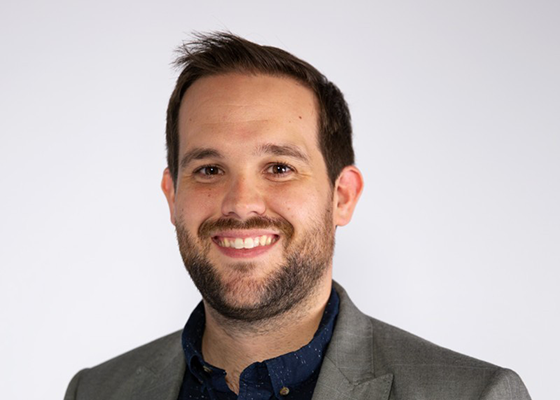
Juvenile Justice Q&A With Salesforce's Sabih Khan
Kyle DavisThe justice system – specifically, the juvenile justice system – is going through a much-needed modernization. This is a complex ecosystem with a number of potential groups involved and data coming in from various systems.
Few people understand the inner workings of this landscape better than Sabih Khan. He is the Industry Strategy & GTM Leader for Public Safety & Justice at Salesforce Global Public Sector, helping to advise agencies on strategies and success. But Sabih's career features roles across the justice space, including as a Crime Analyst and Intelligence Officer for Skokie, Illinois and several leadership roles within the Chicago Police Department.
We were thrilled to talk with Sabih about a handful of topics around what juvenile justice agencies are experiencing and where they’re finding success.
Q: We talk a lot about the complexity of the justice system. Can you give readers a sense of just how many providers, systems, pieces of data can potentially go into a single juvenile justice case?
Sabih: You're absolutely correct, the justice system is complex and the complexity only grows when juveniles are involved. On top of the normal integrations and providers within a criminal case, once juveniles are involved, it brings in the entire caretaking aspect. Now you are engaged with education, housing, medical, and all of the additional aspects that have to be taken into consideration when it is a juvenile.
Pieces of data can range into the thousands for juveniles, but what I believe is more important is to be able to provide a one-pane-of-glass approach to a juvenile. This is a system that flows from stage to stage, while encouraging transparency to all the parties that are involved in some aspect of the juvenile and creates a platform for communication to essentially create a more efficient and collaborative process.
Q: That feels like a natural transition into integration. How big of challenges are you seeing Court Administrations/Family Court Administrations have who still don't have integrated, modern tech systems?
Sabih: It’s a big challenge. More so because with the lack of robust integrations, you invite issues such as manual entries of data into different systems that inevitably create opportunities for inaccurate data. It also creates a disparate experience and, at least in my opinion, is where we see things fall through the cracks. When the juvenile tracking system doesn’t work with the court system or when the victim services case management system is completely siloed from the court case management system is where we see mistakes happen.
Q: I’m curious about your perspective as you’ve been in roles across the ecosystem: as a police officer, deputy chief, and advisor. Are there misconceptions that keep popping up about the justice system or its processes?
Sabih: Like everything else, some misconceptions are warranted and some are not. I believe that within the public safety and justice industry, we’ve lacked the investment in fixing systems that are making the experiences for our residents, victims, litigants, and even defendants disparate, confusing, and cumbersome.
The private sector is forced to invest in customer-centric approaches that make the interaction with their company better because without their customer, they won’t exist. That is different for the government, but because of the lack of investment in customer service, we see the sentiment the general public has for police services, court systems, DMV’s, etc. I think there is a change on the horizon, but these institutions have a lot of work to do and learn from some of the best companies in the world that have been able to create a robust experience for the customers.
Q: What are the biggest roadblocks standing in the way of every county or state implementing a modern juvenile justice solution?
Sabih: I think we would first need to define what is a modern juvenile justice solution. I can say with a high probability that if a county or state would have the opportunity, they would modernize. In reality, funding would probably be the biggest roadblock; politics, both local and national; and then change management. All are legitimate roadblocks and as the providers, we need to be aware of that.
I think it’s impractical for us to think that a county or state court system can throw away everything, including the kitchen sink, and start fresh. That’s not going to happen. So as industry providers, we should be able to help these organizations where they need it the most. What I mean by that is, if an agency needs to invest in a new jury management system or social worker case management system, we can provide that with robust integrations with their current systems. They shouldn’t have to replace everything, just what is most important at that time.
Q: To your point, if it was easy, everyone would be doing it. And there are plenty of challenges. But are there any baseline, easier-lift activities that counties or states could do to help them start the process of modernizing?
Sabih: I think before you do anything, you have to have a plan in place. What does the future state look like at your organization one year, two years, and five years from now? As I mentioned before, it’s not practical to rip and replace all of your systems at once, but with platforms, you can invest and then expand on that platform without having to worry about updates or core functionality.
Then, find those areas that are frustrating your employees and the citizens you serve the most. This usually isn’t hard to do and everyone in the organization may already know where the innovation and modernization is most needed. It can be your juvenile tracking system, victim services, or it may be your actual court case management system.
I’ve seen some really well-laid-out plans that showcase the digital transformation of an entire court system, with a step-by-step guide of transition timelines and the well-thought-out nature of integrations as modernization occurs.
Want to keep the conversation going? Learn more about Studio Science's public sector efforts and Youth Placement Exchange offering.

Kyle Davis
As the Director of Marketing and Communications, Kyle helps guide the brand messaging, content, and go-to-market approach for Studio Science. He has worked in the industry – from regional marketing consultancies to global agencies – for the past decade working with the agencies to grow their reputations and better engage with their clients and prospects.


